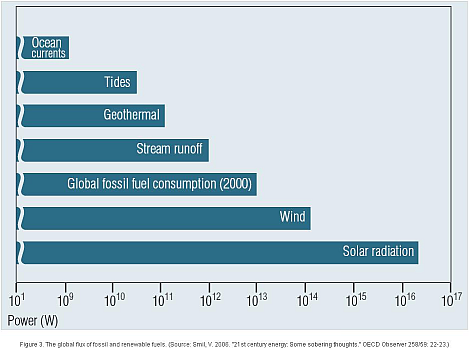Vogelzang
Banned
Posts: 662
Registered: 26-4-2008
Member Is Offline
Mood: No Mood
|
|
Run-Your-Country-With-Water
Brazil produces a lot of their electricity from hydroelectric power plants. I guess that makes sense since there's a lot of rivers in South America.
In this article
http://seekingalpha.com/article/64063-four-brazilian-utility...
it says that CIG gets 82.6% of their electricity from 8 hydroelectric plants and 99.6 percent of ELP's power is hydroelectric. CPL has 23 small
hydroelectric generation facilities, but it doesn't say what percentage of their power is hydroelectric.
CPFL Energia S.A. (CPL), Companhia Energetica de Minas Gerais [CEMIG] (CIG) and Companhia Paranaense de Energia [COPEL] (ELP), also known as COPEL
CPL's investor information in English: http://www.cpfl.com.br/ir/
It says here http://www.cpfl.com.br/ir/ under Brazilian Electricity Sector
| Quote: |
In 2002, the MME (defined below) approved a ten-year expansion plan under which Brazil´s installed power generation capacity is projected to increase
to 129.9 GW by 2015, of which 98.0 GW (75.4%) is projected to be hydroelectric, 23.3 GW (18.0%) is projected to be thermoelectric and 8.6 GW (6.6%) is
projected to be imported through the Interconnected Power System.
In 2006, Eletrobrás owned 42% of Brazilian generation assets. Through its subsidiaries, Eletrobrás is also responsible for 58% of Brazil ´s
installed transmission capacity above 230 kV. In addition, some Brazilian states control entities involved in the generation, transmission and
distribution of electricity. They include, among others, Companhia Energética de São Paulo -- CESP and Companhia Energética de Minas Gerais --
CEMIG.
Private companies had 27% and 70% of the market for generation and distribution activities, in terms of total capacity and demand, respectively, and
21% of the transmission market, in terms of revenue.
|
[Edited on 2-9-2008 by Vogelzang]
|
|
|
vulture
Forum Gatekeeper
    
Posts: 3330
Registered: 25-5-2002
Location: France
Member Is Offline
Mood: No Mood
|
|
What exactly is the point of this thread? Apart from the pun with IrC's thread, I don't see why this belongs here.
|
|
|
Vogelzang
Banned
Posts: 662
Registered: 26-4-2008
Member Is Offline
Mood: No Mood
|
|
Did you take Physical Chemistry? When I took it, the teacher discussed power plants including nuclear power plants. I thought people here might be
interested to see the potential of hydroelectric power plants in some parts of the world, especially since we might start seeing shortages in
conventional oil in the near future (think Hubbert's peak oil theory). There's more than twice as much heavy oil in the world as there is
conventional oil (ie. light sweet crude). Also, coal is the most abundant fossil fuel on earth. One problem with heavy oil, oil sands, oil shale and
coal is that they generate more CO2 then conventional oil when refined and/or made into liquid fuels. CO2 is a minor greenhouse gas which some
environmentalists are very paranoid of. Hydroelectric power doesn't depend on fossil fuels.
[Edited on 3-9-2008 by Vogelzang]
|
|
|
not_important
International Hazard
    
Posts: 3873
Registered: 21-7-2006
Member Is Offline
Mood: No Mood
|
|
Problem with hydro is that most developed countries have already exploited much of their hydro potential. particularly that which can be done without
major impacts on fisheries and the coastal regions of the rivers being used. An example is the Nile, where the trapping of silt behind dams resulted
in the erosion of the marshes at the mouth of the Nile, a major decline in fisheries in the region, and the filling in of the reservoir be a dam which
will reduce its generation potential in a few decades.
The hydropower potential of the planet has been estimated at about 1/10 of the fossil fuel consumption at the turn of the century, the increased
consumption by developing nations such as China and India will noticeably reduce this percentage.
So while hydro can help, it can only help in a minor way, other solutions are needed. Coal releases SOx and mercury, unless used in well designed
gasification plants. Oil sands consume much water in their exploitation, water that is becoming scarce in some areas.

|
|
|
|